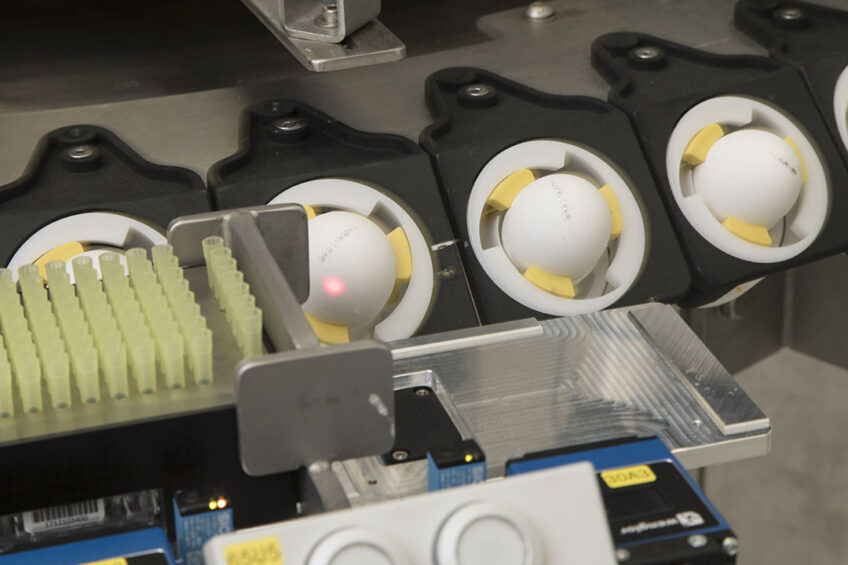Ethical concerns remain with in-ovo gender determination

Recent studies show that in-ovo gender determination of incubated eggs can provide a beneficial substitute for the large-scale culling of male chicks in layer hen production. However, the technology raises ethical concerns relating to the sensitivity of the embryo, the use of screened-out eggs and the accuracy of in-ovo screening.
In-ovo technology enables male chicks to be identified within the egg during the incubation period. Recent developments show that this technology is expected to be ready for market on a large scale in most countries where the technology allows this and where animal welfare is a priority.
Looking at the methods in a nutshell, the first is a method that determines gender at day 4 of incubation with a spectroscopic analysis of extra-embryonic blood vessels. The second method analyses the estradiol content of the allantoic fluid on day 9 of incubation. The third option sets out to analyse the gender through magnetic resonance – offering the ability to sex eggs from the first day of incubation.
A study to determine consumer attitudes
To thoroughly investigate consumer attitudes towards this new technology, a study was conducted in Germany with a representative sample of 482 respondents or consumers in which an anonymous online survey was developed and made available to the participants.
Benefits of in ovo feeding
The nutritional demand of embryos and early aged chicks has changed over decades. Early nutrition programming is one of the latest and successful methods to feed embryos and recently hatched chicks to prepare chickens with a healthy gut, favourable microbiota, improved immunity, and overall improved growth performance. Read more…
Among a representative sample of participants, their geographical context, age and level of education were also taken into account. The researchers believe their findings will be useful to stakeholders in poultry production who are considering the implementation of in-ovo gender determination as an ethically-acceptable substitute to male chick culling.
Stage of in-ovo screening
The stage of embryo development at which the in-ovo screening is performed is as important to the technologists as it is to the consumers. The study revealed that in-ovo gender determination at each proposed day of incubation (day 1, day 4, and day 9) is preferred to chick culling. The screening on day 1 and day 4 was significantly preferred to screening at day 9. This shows that public acceptance of in-ovo screening largely depends on when during embryonic development the screening is performed.
Conscious pain perception
It can be assumed that the ethical value given to the chicken embryo increases with embryonic development. The participants indicated that the destruction of embryos should take place at an early stage of development, before conscious pain perception is possible. However, pain perception is a subject that is still under discussion. It was found that 41% of the respondents would approve of the technology if it could be carried out with certainty before the onset of pain perception.
Pictures influence consumers
Consumer preferences for in-ovo screening was first tested using plain text only and then with pictures of a chick or the incubated eggs at the corresponding stages of development. What was discovered is that the preference for early (day 1 and day 4) gender determination increased significantly because of the pictures provided. Screening at day 9 and day 21 (hatching time) was less preferred when pictures were included.
Sex reassignment in the egg
Israeli start-up Soos has developed a technique to alter the sex of embryos from male to female in the hatchery and thus tackle the culling of male chicks. Read more…
There was also a decrease in willingness-to-pay for the implementation of the technology if the screening is performed at day 9. Willingness was highest at day 1, followed by day 4. The suggested reason for this was that pictures say more than words – besides providing information, they can quickly evoke associations and feelings, and are remembered better and for a longer time than text.
Drivers of debate
In a mass media environment, pictures are readily available and move rapidly through digital channels, which makes them drivers of wider debates in society. It was also stated that the way the pictures are taken and how systems and animals are depicted influences overall perceptions, especially among people who are not familiar with the subject matter.

Screening errors
The survey showed that a high error rate of in-ovo gender determination or the lack of a meaningful use for incubated eggs decreases the approval rate for in-ovo gender determination to an extent, such that no positive willingness-to-pay for implementation of the technology remains. Both a meaningful use of by-products and a high rate of accuracy are crucial factors for the acceptance of in-ovo gender determination.
This study presented 3 uses of screened-out eggs, namely the chemical industry, as pet food, and as livestock fodder. The results showed that the use of screened-out eggs in the chemical industry was the least desirable, while use as pet food was the most preferred. It was suggested that this could be because consumers are more familiar with these uses or that their utilisation as a nutrient is considered superior to utilisation as an industry product.
Technology and animal welfare
Among the respondents, 20% were referred to as ‘technology-savvy’ as they were more concerned with technological advances in agriculture and animal welfare improvements. This group was also strongly against chick culling and greatly favoured the use of screened-out eggs as pet food but disapproved of their use in the chemical industry. In addition, this group was more focused on legislation to include these new developments.
How does the US layer industry manage without antibiotics?
The tipping point for poultry has potentially been reached. A recent survey revealed that 43% of consumers ‘always’ or ‘often’ buy poultry raised without antibiotics. Read more…
Alternative use of male chicks
As found in this study, a comparison of in-ovo gender determination and dual-use poultry production reveals a willingness-to-pay for the implementation of both alternatives, but with the willingness-to-pay being higher for in-ovo gender determination. “Dual-use poultry with male chicks in free-range husbandry is the best alternative to the current culling practice” was the response of 27% of the consumers. In addition, 20% of the respondents indicated that they might accept chick culling under certain circumstances, for example, the use of male chicks as pet food.
An ethically acceptable alternative to chick culling?
In conclusion, the development of a technology which enables chicken embryos to be sexed at an early stage of development may be promising to meet consumer preferences. The results of this survey revealed a considerable willingness-to-pay for the in-ovo technology on the part of the consumers.
The preference becomes clearer when consumers are presented with pictures of incubated eggs or a chick. The findings further imply that a high level of screening accuracy and the meaningful use of screened-out eggs should be clearly communicated to consumers, as these are crucial factors for the acceptance of in-ovo screening as an ethically acceptable alternative to chick culling.
Join 31,000+ subscribers
Subscribe to our newsletter to stay updated about all the need-to-know content in the poultry sector, three times a week. Beheer
Beheer








 WP Admin
WP Admin  Bewerk bericht
Bewerk bericht